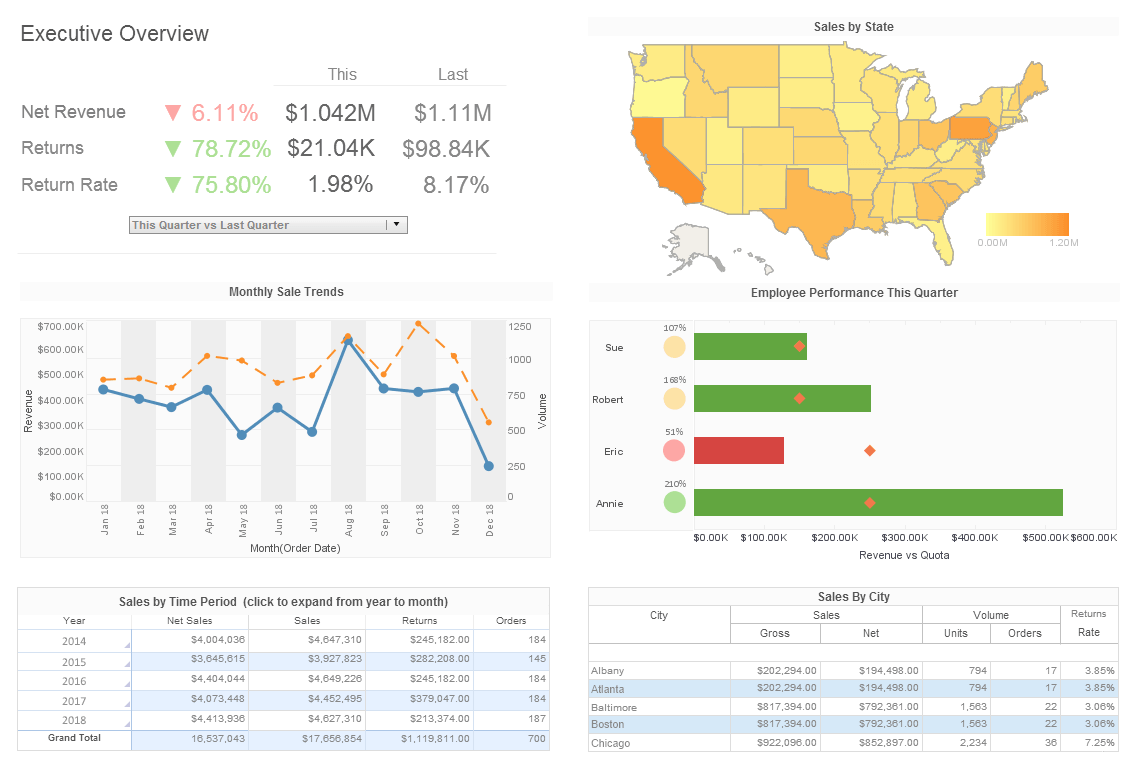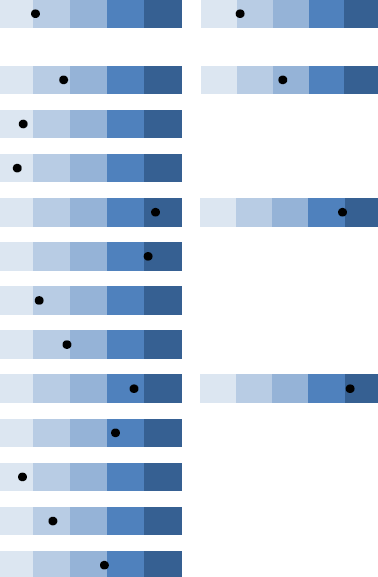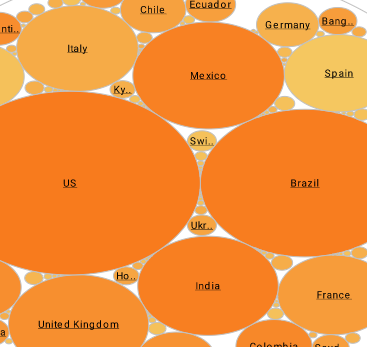Analytical or Operations Dashboards?
There are two main varieties of dashboards: analytical dashboards and operational dashboards.
Analytics dashboards are just that, analytical. They are created for the sole purpose of gaining knowledge and insight from data. Users of these dashboards seek insight into the past and the future, wondering what happened and what's to come.
Operations dashboards, on the other hand, are not created specifically to learn. They exist to manage the day-to-day occurrences of a business.
Like analytical applications, operations dashboards are capable of revealing data trends. Their key function, however, comes from their ability to drill down through current intelligence to get alerts and recognize probable issues that may arise.
Which Type of Dashboard Is Right for Me?
Well, the answer to that question depends completely upon certain parameters:
First and foremost, why do you need any dashboard in the first place? If you need deeper insight into your business or are searching for trends, use an analytical dashboard. If you are interested in KPI awareness or time sensitive matters, an operations dashboard if for you.
Who will be using this dashboard? The overall feel of the dashboard will be determined based on the end user. For executives or analysts, use an analytical dashboard; for managers and standard business users an operations dashboard is more appropriate.
What is the end goal? What are you hoping to achieve by utilizing a dashboard? If you have strategic goals, go with an analytical dashboard. If you are tracking against goals; an operational.
Finally, an important thing to consider is where your source data is stored. Operations dashboards are typically more suited to improving the visibility of singular systems and applications as opposed to multiple data sources.
What Is an Analytical Operations Dashboard?
An analytical operations dashboard is a powerful tool used by organizations to monitor, analyze, and visualize key performance indicators (KPIs) and operational metrics in real-time or near-real-time. It serves as a central hub where data from various sources and systems are collected, transformed, and presented in a visually intuitive format, enabling stakeholders to make informed decisions and gain actionable insights into the overall health and performance of their operations.
In essence, an analytical operations dashboard goes beyond simple data visualization. It leverages advanced analytics and data processing techniques to provide a comprehensive view of an organization's operational activities. This includes tracking metrics related to production, sales, supply chain, customer service, financial performance, and more. By aggregating and presenting this data in a clear and concise manner, decision-makers can quickly identify trends, anomalies, and areas for improvement, ultimately leading to better strategic planning and operational efficiency.
One of the key features of an analytical operations dashboard is its ability to facilitate data exploration and analysis. Users can interact with the dashboard, drilling down into specific data points, applying filters, and comparing different metrics to uncover underlying patterns and correlations. This empowers organizations to identify root causes of issues and take proactive steps to address them, rather than simply reacting to problems after they occur.
Furthermore, modern analytical operations dashboards often incorporate predictive and prescriptive analytics. Predictive analytics uses historical data and machine learning algorithms to forecast future trends and outcomes, helping organizations anticipate demand fluctuations, identify potential risks, and optimize resource allocation. Prescriptive analytics goes a step further by suggesting specific actions to optimize outcomes based on the insights generated from the data.
Opinions on analytical operations dashboards can be quite positive due to the transformative impact they can have on businesses. They enable data-driven decision-making across all levels of an organization, fostering a culture of accountability and continuous improvement. With the growing complexity of today's business environment and the deluge of data available, having a centralized and intuitive dashboard becomes indispensable for extracting meaningful insights and maintaining a competitive edge.
However, it's worth noting that the effectiveness of an analytical operations dashboard heavily depends on data quality and the relevance of the selected KPIs. If the underlying data is inaccurate, incomplete, or outdated, the insights drawn from the dashboard could be misleading or inaccurate. Therefore, investing in data quality and establishing robust data governance practices is essential to ensure the reliability of the insights derived from the dashboard.


